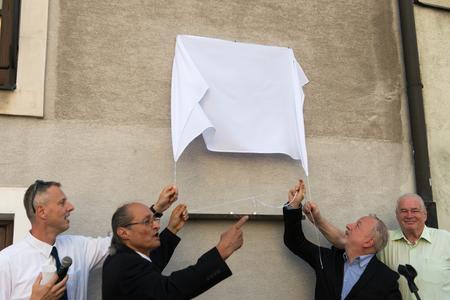Enter the Krav Maga gym at TJ Sokol, one of the oldest sports clubs in Bratislava, located near the main railway station, and you will initially observe little that is remarkable. Soft red mats run along the entire length of the gym, with a few punchbags lined up along one side.
Contact information
The Krav Maga club resides on Sokolská Street. Drop them a message via Instagram or send them an email: info@zaseba.sk.
It’s standard equipment for a place where people come to learn how to defend themselves.
Two things stand out, however. One is the music. As the training sessions often coincide with other activities at the club, you may often hear what Slovaks call ‘šláger’ music, or locally produced hits from the 90s repeated over and over again. This is because the sessions coincide with gymnastics sessions for elderly women. Sometimes it is amusing: people are throwing punches not to the thumping beats typical of gyms, but to tunes that would not be out of place at a Eurovision song contest.
The second surprise is when instructor Jakub Rumanovský finishes showing and explaining a technique. His assistant immediately translates into English what he has just said, for the benefit of the foreigners attending the session. When the assistant is not present, Slovak trainees step in and translate the instructions themselves.
Roots in Bratislava
Krav Maga is a self-defence system known for its focus on real-world situations and efficiency.
"As a system intended primarily for physical self-defence, Krav Maga is based on natural human reactions. It uses techniques designed to cause maximum damage to the aggressor in the shortest possible time," explains Jakub Rumanovský.
"Therefore, there are no complex technical movement patterns in Krav Maga compared to other systems. Simple movements, punches and kicks are used. For this very reason, one does not have to train for 10 years to master a technique."
In Hebrew, the name means 'close combat'.
Although first developed for the Israeli army in 1950s and 1960s by Imrich "Imi" Lichtenfeld, the roots of Krav Maga date back to his time in 1930s Bratislava, when anti-Semitic violence had become increasingly prevalent.



